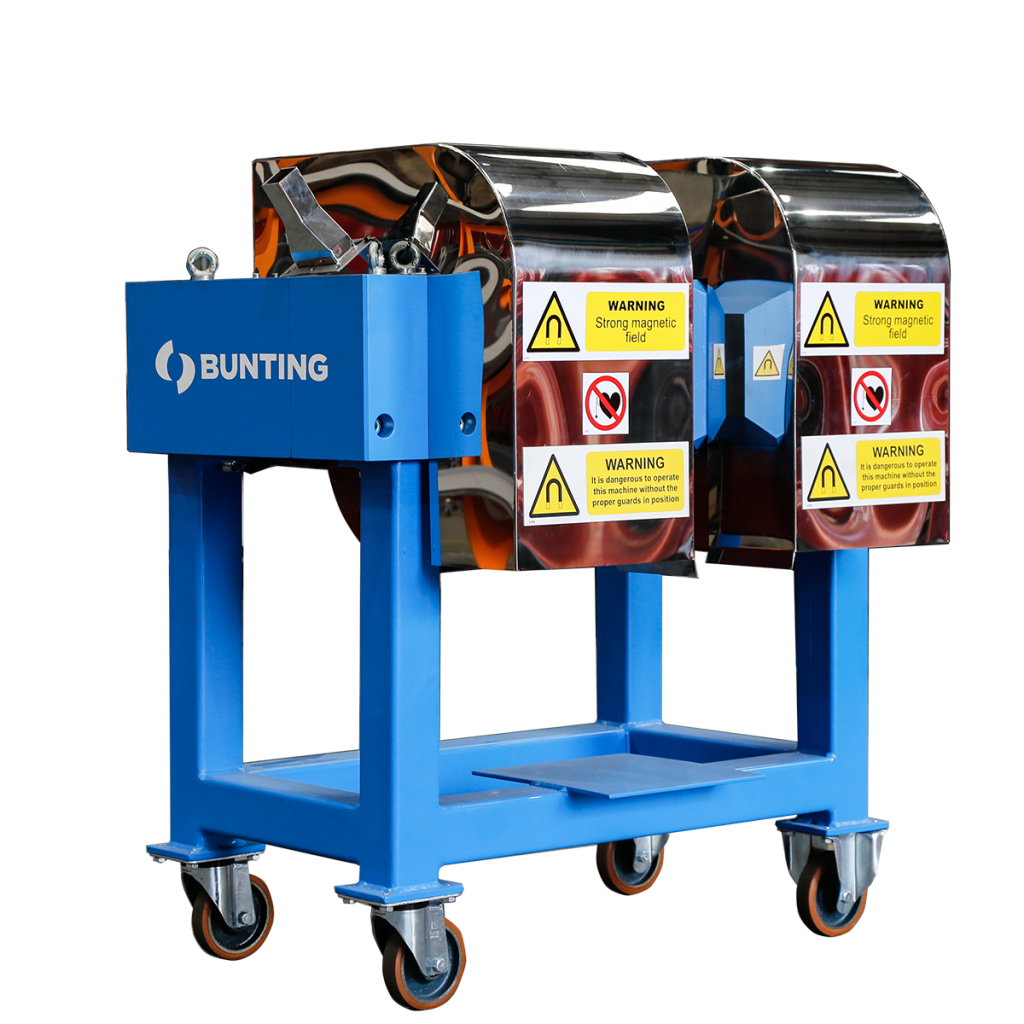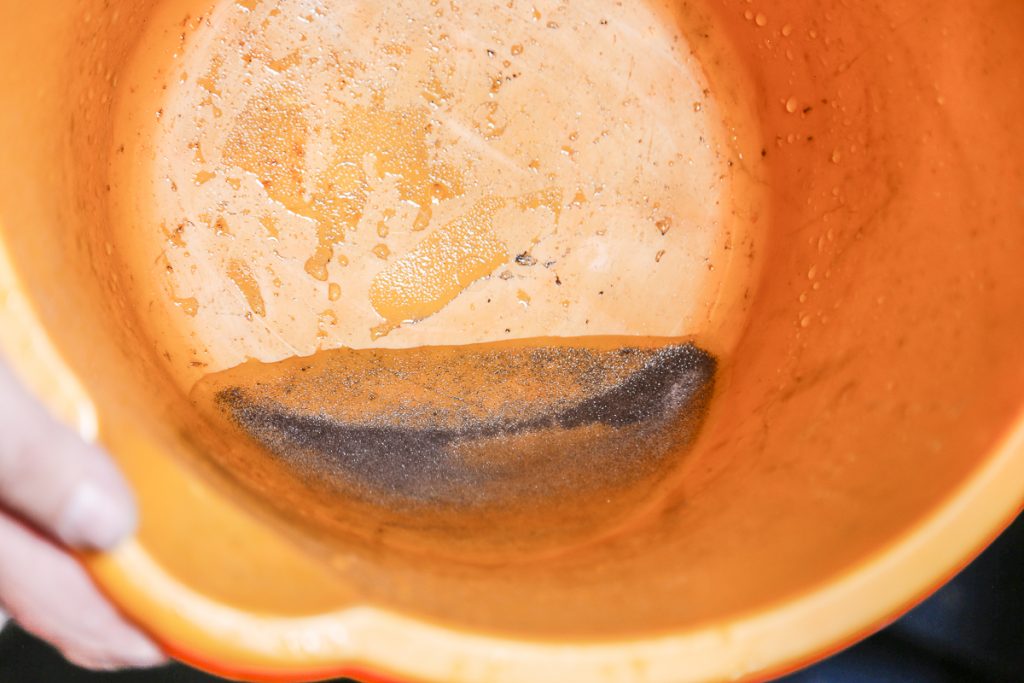Laboratory WHIMS for Wardell Armstrong
By Paul Fears | 14 March 2023
Wardell Armstrong, a leading global consultancy for mining and mineral processing, has acquired a laboratory-scale Wet High Intensity Magnetic Separator (WHIMS) from Bunting. The laboratory WHIMS is for the consultancy’s material test facility located in Cornwall, United Kingdom. The laboratory-scale WHIMS is part of Bunting’s range of small-scale high-intensity magnetic separators.

Wardell Armstrong is a multidisciplinary environmental, engineering, and mining consultancy providing a broad range in services to the infrastructure and energy, property and development, and mining and minerals sectors. The company’s history dates back over 185 years and has developed a reputation for high quality service in the UK and internationally.
For many years, Bunting and Wardell Armstrong have worked together on mining, mineral processing and environmental projects requiring material separation tests. Bunting’s Customer Experience Centre in Redditch, UK is a globally-leading testing facility for high-intensity magnetic separation, electrostatic separation, and eddy current separation. The purchase of the laboratory WHIMS provides Wardell Armstrong with greater testing and research capabilities on-site at Truro. Bunting will continue to provide support for the testing of materials on other high-intensity magnetic separators such as the Rare Earth Roll and industry-leading technology such as the electrostatic separator.
High Intensity Magnetic Separation Tests
Controlled material tests on laboratory-scale high-intensity magnetic separators provide vital data on the mineralogy of an ore or deposit. The electromagnetic laboratory-scale Wet High Intensity Magnetic Separator (WHIMS) removes fine magnetics and para-magnetics from mineral slurries. Handling minerals in a slurry or suspension is preferable for many processors, especially when beneficiation involves wet processing. Additionally, a wet process often produces a better separation for very fine materials.
The laboratory-scale Wet High Intensity Magnetic Separator (WHIMS) features two electromagnetic copper coils mounted either side of a canister housing a matrix, which captures magnetically-susceptible particles.
The electromagnetic coils project a manually controlled magnetic field of between 0-20,000 Gauss (0-2 Tesla) into the open gap of the canister housing the matrix. The level of magnetic field strength in the open gap is set in accordance with the separation objective and magnetic susceptibility of the minerals being processed. The magnetic field is intensified on the points of the matrix and there are various designs of matrix to suit different minerals applications and particle size ranges (down to <2µ).

In operation, an initial evaluation of the test material determines the type of matrix and also the level of magnetic field required to meet the customers objectives. The magnetic field of the laboratory WHIMS is calibrated using the calibration graph (provided with each laboratory WHIMS). The graph shows the relative magnetic field (in Gauss) at different current levels (in Amps) with and without the matrix. The requisite level of Amps to project the required magnetic field is set on the control panel. As the magnetic field rises, the increased magnetic field strength and gradient enables the capture of weaker and para magnetic minerals.
Once the matrix and magnetic field test parameters are set, the laboratory WHIMS is activated with material gravity fed in a 15-20% w/w suspension through the central matrix. Any residual material in the feed container is washed out into the matrix using a known volume of wash water.
The non-magnetic minerals and the water flow through the matrix and are collected in a receptacle underneath. Magnetic particles are held in the matrix by the magnetic field. To remove a small proportion of non-magnetics potentially entrapped in the matrix, water is flushed through with the magnetic field still on.
The non-magnetics receptacle is then replaced for collection of the magnetics fraction. The magnetic field is turned off, which releases the magnetically trapped particles. The matrix is once again flushed through several times with water to ensure the matrix is empty. Commonly, both samples are then dried before being analysed.
The laboratory-scale WHIMS is an extremely versatile high intensity magnetic separator used globally in mineral processing, ceramics, and by water treatment companies, as well as universities and research institutions. The WHIMS is one of several high-intensity magnetic separators in Bunting’s laboratory-scale range.
“The need to process increasingly difficult deposits and recycle materials previously classed as ‘waste’ is driving a demand for high-intensity magnetic separation,” explained Neil Rowson, Bunting’s Laboratory Manager. “Bunting already conducts extensive test work for the consultancy at our Customer Experience Centre in Redditch, but with an increasing number of projects the consultant wanted to expand their own test capabilities.”
Related Mineral Processing Technical Articles
Mineral Processing Testing Facility
The laboratory-scale WHIMS at Bunting’s Customer Experience Centre in Redditch, UK, is used to assess the magnetic separation capabilities on a wide range of mineral deposits. Globally-based mineral processing companies send material to the UK, where Bunting’s mineral processing engineers assess the optimum magnetic separation techniques to achieve a specific separation objective.
The laboratory is equipment with a wide range of equipment including:
- Smaller scaled versions of industrial Magnetic Separators. This equipment is used to accurately scale up to industrial capacities and calculate performance guarantees;
- X-Ray Fluorescence and X-Ray Diffraction analysis are available for chemical assay and mineralogical identification to aid the development of a viable process route for each application;
Magnetic Separators – Mineral Processing Laboratory
For further information on our range of magnetic separation equipment designed for mineral processing, or to arrange sample tests in our laboratory, please contact us on:
Email: Michael Allen on MAllen@buntingmagnetics.com
Telephone: +44 (0) 1527 65858
All photographs taken by Paul Fears Photography
To keep up to date with our news and technical reports, please follow us on social media